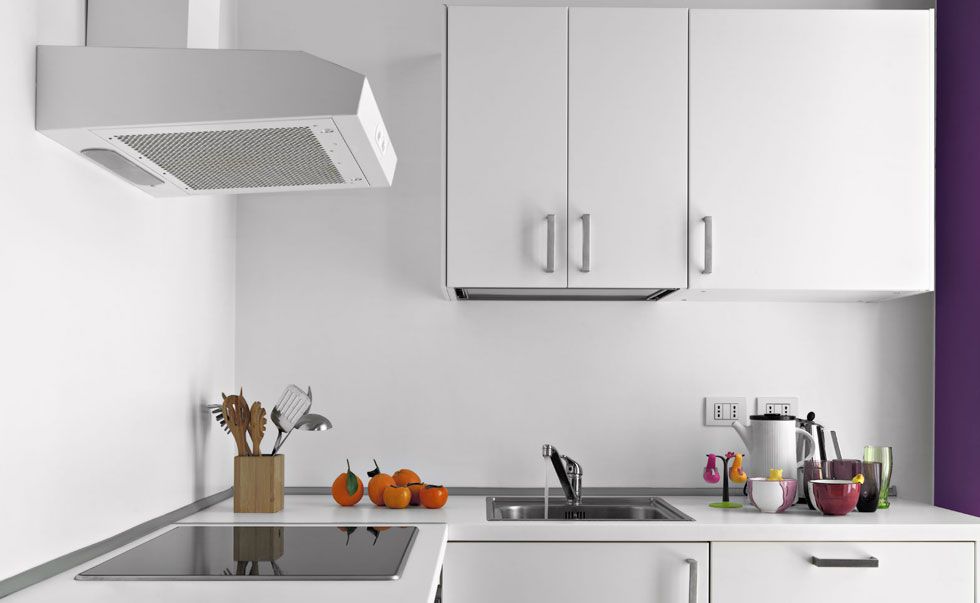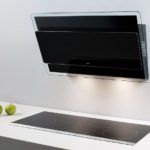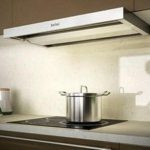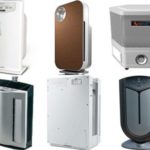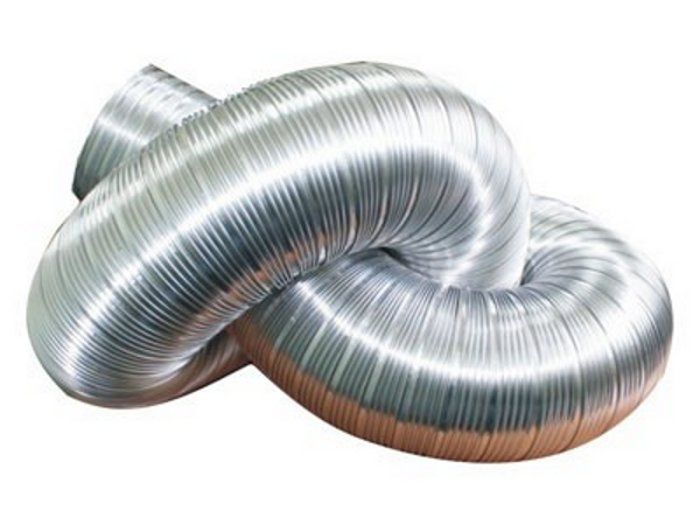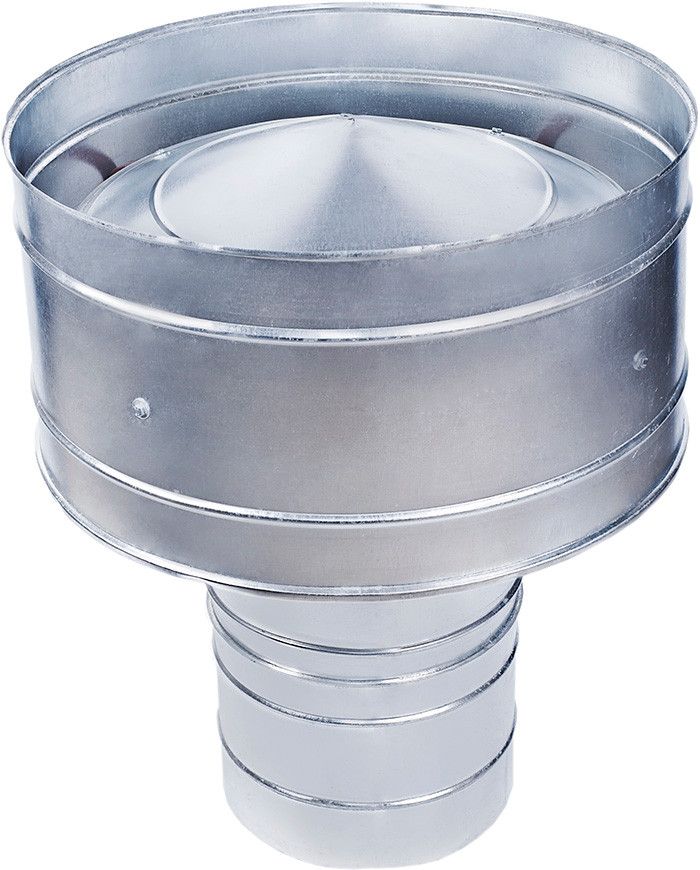Recirculation hood
The content of the article
- Basic modes of kitchen exhaust hoods
- Recirculation hood - description
- Types of recirculating hoods for the kitchen
- Features of operation of recirculation hoods
- Advantages and disadvantages of recirculating hoods
- Types of filters used for recirculating hoods, their features
- Tips for choosing a recirculating hood for the kitchen
Basic modes of kitchen exhaust hoods
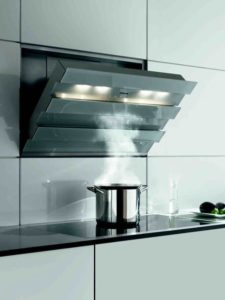 You can get rid of the smell of cooking food and oil particles in the air using natural ventilation through an open window, or forcefully by turning on the hood. Her choice will require analysis of a wide range. Based on the principle of operation, hoods can be divided into two large groups: flow-through and recirculation.
You can get rid of the smell of cooking food and oil particles in the air using natural ventilation through an open window, or forcefully by turning on the hood. Her choice will require analysis of a wide range. Based on the principle of operation, hoods can be divided into two large groups: flow-through and recirculation.
The flow-through system removes air from the room to the ventilation shaft or to the street through a hatch. Clean air enters through windows and doors due to the draft generated.
The recirculation system passes air through filters and delivers it purified back to the kitchen.
Each cleaning method has its own advantages and disadvantages. Flow purification provides large volumes of high-quality air, but requires significant installation costs and takes up more space. Filtration is economical to install, but requires regular replacement of cleaning elements.
Recirculation hood - description
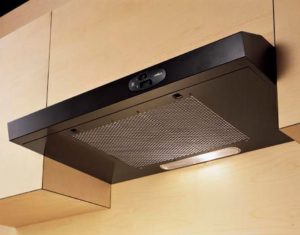 Suitable for small rooms, infrequent use, as well as in case of improper operation of general building ventilation, low air quality outside the window (for example, next to an industrial area).
Suitable for small rooms, infrequent use, as well as in case of improper operation of general building ventilation, low air quality outside the window (for example, next to an industrial area).
Device
One or more fans rotate in the case. Air from the food being cooked is drawn into the device. Once inside, it passes through filters that clean it of oil particles and odors. The purified air from the other side of the device exits back.
Difference from other types of kitchen hoods
Unlike flow hoods, recirculating hoods are more autonomous and compact. Having decided to hang it above the stove, you have to take care of the electricity supply and space comparable to its dimensions at a height of 80–85 cm above the burners. In comparison, flow cleaning requires significantly more space to install a large duct.
Types of recirculating hoods for the kitchen
Design options allow you to place the recirculating hood in different parts of the kitchen; the choice depends only on where the stove is located. Depending on the location of the structure, there are:
- wall-mounted – traditional wall mounting;
- built-in - usually installed on a cabinet above the stove, have a protruding part that extends like a canopy during operation; It is technically possible to build a hood into the countertop, so that it extends while cooking and draws in air directly next to the hob;
- island - used above kitchen stoves installed away from the walls.
Features of operation of recirculation hoods
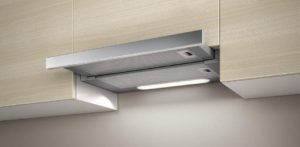 Autonomous operation does not provide oxygen to the air, and ventilation is required after a while. The air is thoroughly cleaned of soot and grease, but without ventilation it remains humid.For high-quality air purification, timely replacement of filters is required, otherwise not only moisture, but also odor and fat particles will remain in the air.
Autonomous operation does not provide oxygen to the air, and ventilation is required after a while. The air is thoroughly cleaned of soot and grease, but without ventilation it remains humid.For high-quality air purification, timely replacement of filters is required, otherwise not only moisture, but also odor and fat particles will remain in the air.
Advantages and disadvantages of recirculating hoods
Due to the design features, there are advantages and disadvantages.
Advantages:
- affordable price due to lower power;
- longer service life due to low loads;
- reverse draft is excluded;
- air purification even with faulty general building ventilation;
- autonomy, the ability to install in any convenient place;
- ease of installation;
- compact sizes.
Flaws:
- the need to replace filters, the cost of which is an order of magnitude higher than that of flow-through models;
- low efficiency when installed above a gas stove, since the filters cannot cope with combustion products.
Important! A feature that should not turn into a disadvantage: when choosing a recirculating hood, study the range and availability of filters for different models! Sometimes buying an inexpensive, unique hood results in headaches and disproportionate expenses when replacing filters.
Types of filters used for recirculating hoods, their features
Typically, in autonomous structures, the air goes through two stages of purification:
- from visible particles;
- fine cleaning.
Different materials are used for filtration:
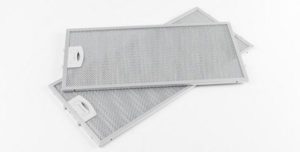 Metal Mesh filters are installed on each hood; they trap grease and other small splashes from the air. The finer the pattern of such filters, the fewer particles appear inside the hood housing, the lower the wear of the internal parts and the longer their service life.
Metal Mesh filters are installed on each hood; they trap grease and other small splashes from the air. The finer the pattern of such filters, the fewer particles appear inside the hood housing, the lower the wear of the internal parts and the longer their service life.
These replacement filters are available for sale. However, metal mesh is washable.Stainless steel ones tolerate machine washing well along with dishes; aluminum ones must be washed by hand to prevent oxidation.
Microscopic particles are captured by fine filters:
- carbonic – the most common and accessible, it absorbs foreign substances from the air well, ensuring high efficiency of the exhaust; absorption occurs at the molecular level, the carbon filter cannot be washed, it is disposable;
- acrylic – has a fibrous structure, which theoretically allows gentle hand washing without spinning and repeated use; in practice, the material is not durable; when washing, the filter often fails; requires an expensive purchase of a new one;
- disposable filters made of padding polyester, non-woven fabric, paper widely popular due to its availability; the cleaning depth is somewhat inferior to coal.
The frequency of filter replacement and cleaning is usually indicated in the manufacturer's accompanying instructions. The actual effective life of the filter depends largely on the intensity of use of the equipment. Taking into account the period specified by the manufacturer, as well as the intensity of your use, check whether there is a layer of grease and soot on the metal filter. If there is, it's time to clean and/or replace.
Modern models are often equipped with pollution indicators.
Tips for choosing a recirculating hood for the kitchen
When choosing, you need to consider:
- suitable dimensions - the width should be slightly larger than that of a kitchen stove;
- power corresponding to the size of the room (indicated in the instructions);
- noisiness - it is conventionally accepted to consider a hood to be silent if its noise is 30 dB, quiet - 40–50 dB; loud - more than 50 dB, maximum permissible for home - 70 dB;
- optimal set of functions.
The functionality of modern hoods varies greatly. Assess your need for:
- automation of the process depending on temperature and humidity indicators;
- touch control;
- remote control;
- other auxiliary functions.
Each additional feature will require an additional payment.

